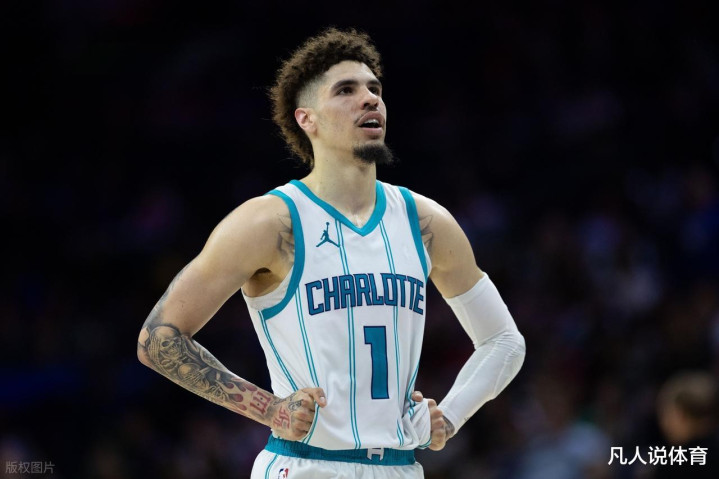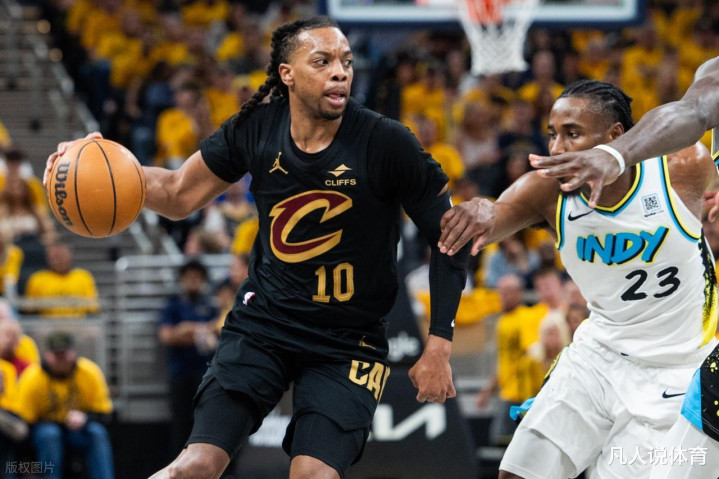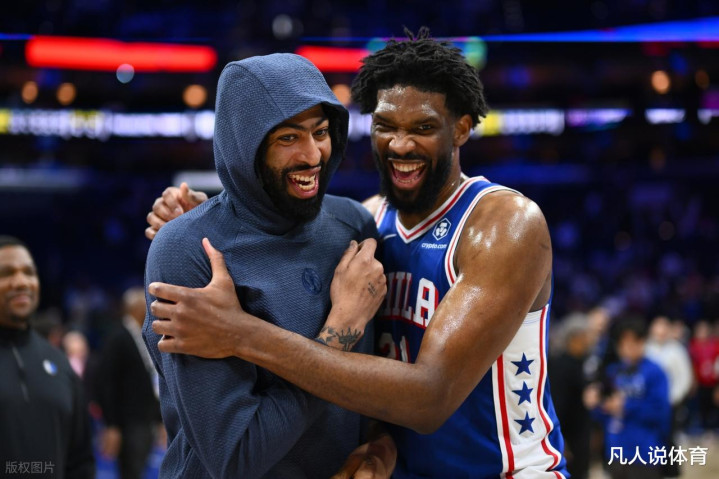289 Sports > Basketball > The hidden worries behind sky-high contracts: The cruel game under the NBA’s premium contracts
The hidden worries behind sky-high contracts: The cruel game under the NBA’s premium contracts
In today's NBA, the salary cap is soaring, and maximum salary contracts are blooming like flowers. However, behind this seemingly glamorous appearance, there are many unknown cruel realities hidden. Injuries, decline in form, and attendance rate are like three sharp knives hanging over the team's head, always affecting the value of these sky-high contracts.
Embid: 50 million hanging sword of injury
The Philadelphia 76ers have pinned their future hopes on Embiid and offered him a huge contract of more than 50 million US dollars per year. This contract allows him to earn far more than more than 400 players in the league even if he is bedridden. When healthy, Embiid undoubtedly has MVP-level strength, but the key question is whether his fragile body can carry this heavy trust. Embiid's salary ranks third in the league, but his attendance rate continues to decline. The 76ers' gamble is gradually falling into a dangerous situation. The team fully expects him to become the core force to win the championship, but frequent injuries make his time on the court more and more precious, and every absence makes the team's road to the championship more difficult.

Leonard (Clippers)
Kawhi Leonard has two years and $100 million left on his contract with the Clippers. This iconic figure in the league's "suits and ties" has joined the Clippers for six full years since the Raptors won the championship. However, during these 6 years, his attendance rate was staggeringly low - he missed most of the season due to minor injuries, and he only played 60 regular season games once in 6 seasons. He only played in 37 games last year and has only appeared in 6 games so far this season.

It is undeniable that when healthy, Kaka is still the league's top offensive and defensive star. His scoring stability, key ball handling and defensive pressure are all at the top level. But the core of the problem lies in his increasingly prominent "glass attributes" and his controversial attitude towards resting. Frequent absences due to non-fatal injuries have made the Clippers' championship plan passive many times, and the cost-effectiveness of this billion-dollar contract has been questioned. Now his salary ranks 14th in the league, but he has never been able to provide stable on-field contributions. "It's a great game, but it's a pity that he doesn't play often." This is the most distinctive contradictory label of this superstar at the moment.
Paul George (76ers)
After more than 8 months of long injury layoff, Paul George finally made his debut in the new season. The star wearing the 76ers jersey has a three-year blockbuster contract of US$162 million, ranking 13th in the league in salary. He played 21 minutes in this game and contributed 9 points, 7 rebounds and 3 assists, which can be regarded as regaining some game feeling for himself after a long absence.

However, the dispute over the premium of this 100 million yuan contract has long been the focus of heated discussions in the league - the core crux lies in his rapid decline in competitive status in recent years and his perennially worrying attendance rate. Last season was George's first season with the 76ers, and it could be called the "Waterloo" of his career: not only did he play in 41 regular season games, but his attendance stability was insufficient, he also delivered the worst performance of his career on both offense and defense. His former "pickled pepper" offensive and defensive dominance has greatly faded. Now the "billion-dollar duo" formed by him and Embiid was originally the core team of the 76ers in the championship. However, George's health risks and state fluctuations have always been unresolved. Whether this high-paying contract can match the expected value has also become one of the most critical variables on the team's road to the championship.
Bill and Zion: High salary, low ability and the tragedy of weight
Bill's situation is particularly concerning. The remaining two years and $100 million of his contract with the Suns, plus his base salary with the Clippers, brings his total earnings this season to more than $50 million. However, he was declared reimbursed after playing only 6 games this season. With such a "high salary and low ability" performance, it is no wonder that he was nicknamed a "fraudster".

The situation in Zion is equally regrettable. He is extremely talented, but he has only played 214 regular season games in six seasons and has never made it to the playoffs. The Pelicans' five-year investment of 197 million in him seems to have been in vain. Looking at his slightly bloated figure and his staggering steps when moving on the court, one can't help but wonder whether this contract will become one of the worst investments in NBA history. His physical condition seriously affected his performance on the court and made the team's future full of uncertainty.

The dilemma of the new generation: The struggle of Ball and Garland
LaMelo Ball and Darius Garland represent the problems faced by the new generation of players. Ball's performance at the beginning of each season always brings surprises, but injuries follow him, making his four-year contract with an average salary of over 40 million full of risks. He has never played more than 75 games in a single season, and has only played 36, 22 and 47 games in the past three seasons. Such a low attendance rate has forced the Hornets management to seriously consider the possibility of trading him.

Garland faces the question of "regular season star". His poor performance in key playoff games, combined with an average annual salary of more than $42 million, puts the Cavaliers in a dilemma. Other teams are reluctant to offer too high a bargaining chip due to concerns about his defensive shortcomings and injury risks. This contract is likely to become a heavy burden for Cleveland moving forward.

The puzzle of thick eyebrows: the imbalance between data and influence
The situation of Anthony Davis is the most complicated. With a three-year, $175 million max-salary contract, his averages of 20.8 points and 10.2 rebounds per game seem acceptable, but the Mavericks' record and his actual influence on the team are seriously inconsistent with his status as a max-salary player. Weight gain, injuries, and a low attendance rate of only 15 games after joining last season reveal a cruel fact: talent does not equal value.. The team originally expected that he could lead the team to victory with his talent, but the reality has greatly reduced the return on this huge investment.

Conclusion: Health is the cornerstone of victory
Behind these premium contracts, it highlights the common dilemma faced by NBA team management. At a time when star power is increasing, they have to take huge risks in order to retain or attract talented players. However, when injuries become the norm and decline in form is inevitable, these sky-high investments are likely to become an obstacle to the team's development.
In this league full of money and interests, the most valuable thing is not the maximum salary contract, but the seemingly simple but difficult-to-achieve quality of health. After all, no matter how outstanding a talent is, its value can only be truly reflected through actual performance on the court. For these players with premium contracts, the best way to prove that they are worthy of the salary is not to wear fashionable suits on the sidelines, but to perform wonderful performances in line with their worth on the court. However, there may not be much time left for them to prove themselves.
Related Posts
Beating the Pacers, the Cavaliers also set a record! Mitchell 32+8, Garland second on the team, Sika 26+9+4
BasketballOn November 22, the Cavaliers played against the Pacers in the NBA Cup. At the end of the game, the Cavaliers successfully defeated the Pacers 120-109. This season, the Cavaliers averaged 45 three-pointers per game, ranking first in the league, but...
moreThe hidden worries behind sky-high contracts: The cruel game under the NBA’s premium contracts
BasketballIn today's NBA, the salary cap is soaring, and maximum salary contracts are blooming like flowers. However, behind this seemingly glamorous appearance, there are many unknown cruel realities hidden. Injuries, decline in form, and attendance rate...
more21 consecutive best team appearances before! Famous reporter: LBJ can only miss 3 more games, otherwise he will miss the individual award
BasketballNovember 22nd today, famous reporter Dave McMenamin talked about whether James can play 65 games this season. DaveMcMenamin said: "LeBron can only miss a maximum of 3 more games before the end of the regular season to be eligible for awards inc...
more
Hot Posts
- With 5 consecutive victories in hand, the Rockets still have 3 gains to win. They have found Ethan as a substitute. One play style cannot become the norm.
- Suns coach: It’s never easy to limit Wenban. This is our best defensive performance this season.
- Dark horse! The Bulls officially revealed the first record in the Eastern Conference: We love 5-0, keep working hard
- Last season, averaged 9.7 points and 2.2 rebounds! Jersey Reporter: Coffey wore No. 17 jersey in the Bucks
- 18 years of the showdown in the league to looking up to the new king, the legend continues
- Durant himself never thought he could enjoy super high treatment in his life, but he came to the right place!
- The park championship has no value? American News: The Lakers have better psychological adjustment and beat many stars all the way
- As strong as Jokic is only the No. 41 pick in the second round in 2014. Who are the top five in the same class? Tanhua became an MVP
- Well-known reporter: The Lakers center may get a contract of 5.2 million, but he may still stay with the Lakers
- The logo of the NBA tough guy: Kobe s Achilles tendon, Rose s knees, Green s heart
Recent Posts
-
Barkley: Harry s father is absolutely wrong. He can t rush into the field and then point fingers at the players
-
Lake Record: The Lakers are currently paying attention to center players including Clarkston and Gafford
-
The dilemma and future of the Chinese women s basketball team: From serious mistakes in choosing coaches to rebuilding and returning to the top of the world
-
Türkiye coach: I guess many NBA teams want to give Osmani contracts. He is very good at defending Antetokounmpo.
-
James is neglected, Doncic is behind the scenes, and the Lakers are quietly transferring power this summer
-
Who should I click...Stone: There are very few people in the Rockets management, and it s meaningless to get a bunch of people who don t have the right to speak.
-
The Warriors failed to recall Durant and took 2 wrong steps! One is to be too hasty, and the other is to defeat the Rockets!
-
Swapping identities? Amen was defeated by Osa in a duel between brothers. He has obvious shortcomings, and there is a high probability that he will not be able to get a maximum salary next year.
-
Average of 26 points, 5 rebounds and 3 assists per game, Xika, you are too cruel, the East Finals broke out, and the 190 million contract was priced at a bargain
-
9 laughter and crying expressions! There is a black box to draw the No. 1 pick? James s news is a coincidence